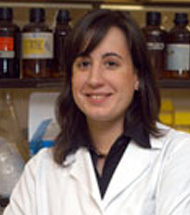Nature Genetics publica una investigación del CIMA de la Universidad de Navarra sobre un cáncer agresivo en niños y adolescentes
Nature Genetics publishes a study from the CIMA from the University of Navarra on an aggressive cancer in children and adolescents
The discovery of the duplication of a gene in 8% of the patients with a type of acute lymphoblastic leukemia may lead to a new treatment

More than 8% of the patients with T-cell acute lymphoblastic leukemia, a type of aggressive cancer frequent in children and adolescents, have a duplication of the gene MYB. This was discovered in a study carried out in the University of Louvain (Belgium), in which scientists from Center for Applied Medical Research (CIMA) from the University of Navarra collaborated. Nature Genetics just finished publishing the results, which are based on the analysis of 134 patients and could lead to a new therapy for the illness.
Searching for more effective therapies with fewer side effects
Acute T-cell lymphoblastic leukemia consist of a total of 15% of all acute leukemias. According to Dr. María Dolores Odero, a researcher at CIMA and the co-author of the published study, "The cancerous change in the T-cells is caused by the co-operation between different genetic mutations. Our results demonstrate that the duplication of MYB is important in this type of Leukemia and thus this gene could be target for therapy."
Currently, the treatment used for these patients is chemotherapy. The inhibiting effect of NOTCH1, another oncogene that influences this cancer, is being studied, but the treatment has harmful side effects and some patients have to even interrupt treatment due to these side effects. The results published in Nature Genetics demonstrate that the combined inhibiting effect of NOTCH1 and MYB in this type of leukemia is very effective. These conclusions raise hope for the development of treatment therapies that are both more effective and less toxic.
The scientific article above mentioned was written by Dr. Idoya Lahortiga, a biologist who began her career as a researcher in the Department of Genetics of the University of Navarra and continued his postdoctoral formation in the field of Oncology of the CIMA. The Spanish Association Against Cancer has financed part of this research, which Dr. Lahortiga is currently developing in the Department of Molecular Genetics directed by Dr. Jan Cools in Lovaina.
